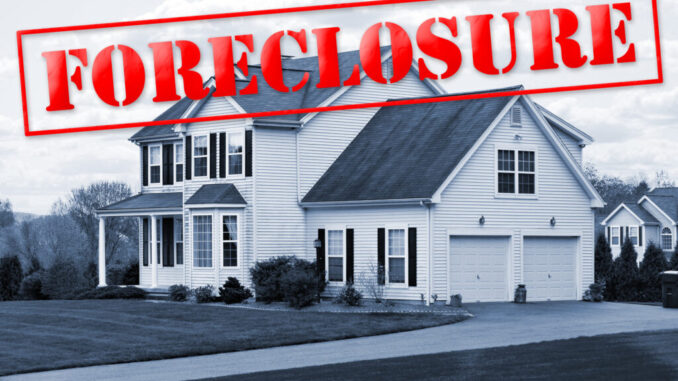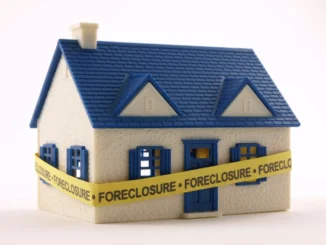
This article might be premature because across most of the country home sales continue happening rapidly. However, ATTOM (real estate data) released comprehensive foreclosure data for the first quarter of 2022 showing a total of 78,271 U.S. properties with a foreclosure filing. The trend is up 39% from the previous quarter and up 132% from a year ago.
Investors are looking at the current economic situation and anticipating that an even bigger spike in foreclosures is on the horizon. Many of these will be new investors that don’t have experience with the pre-foreclosures, short sales, and foreclosures, that occurred during the Great Recession. No one should expect foreclosure activity anywhere near the same level as during the Great Recession. Lenders have been more conservative about qualifying homebuyers and the dramatic increase in home values has created substantial homeowner equity that protects against foreclosures. However, the current economic turmoil will inevitably lead to some increase in foreclosure activity.
Pre-foreclosures are Confusing to Many People.
Pre-foreclosures are commonly confused with the foreclosure process and REOs (real estate owned by a lender). The actual foreclosure process is relatively brief. This is the auction that happens on the courthouse steps. This is seldom the best time to buy a house because you don’t have an opportunity to inspect the interior of the house and foreclosed owners often do a lot of damage including taking the kitchen sink on their way out. The buyer of a foreclosed home also has the responsibility of evicting the previous owner.
What many people think of as a foreclosure is actually REO. If the house doesn’t sell on the court steps, the lender (bank) takes possession. This becomes REO. The REO sales process is much the same as any traditional sales process. The bank lists the property with a real estate agent. Potential buyers can inspect the entire house and negotiate terms and conditions for the purchase. The pre-foreclosure process does not follow this process.
When a House Goes Into Pre-foreclosure
A house enters the pre-foreclosure process after the owner misses one or more mortgage payments and the lender sends a Notice of Default (NOD). In states requiring a judicial foreclosure, the formal paperwork is known as a Lis Pendens. Just because a lender gives formal notice of default does not mean the house will be foreclosed on. If an owner wants to and has the money to bring the loan current, the house is brought out of default and the homeowner returns to making payments according to the original loan agreement. However, the NOD is the beginning of the pre-foreclosure process.
There are generally three ways you can find these notices. NOD and Lis Pendens are public records. These are found at the county recorder’s office. Digging through county records can take hours and hours of your time. Fortunately, there is an easier way. The NOD and Lis Pendens are also published in the legal notices section of a local newspaper. The legal notices section is typically part of the classifieds. Also, some websites and businesses gather this information into lists that you can purchase.
How to Find Pre-foreclosure Homeowners
You use the contact information from the public notices to hunt down the owners before the house goes to auction. Some houses will already be listed with real estate agents (owners trying to sell before being foreclosed on). Others will not. Either way, you want to negotiate a fast sell so that the seller avoids having a foreclosure listed on their credit report. The seller has options as long as the house is worth more than the outstanding loan. But this isn’t always the case. If the house is worth less than the outstanding loan, the seller has options, but a straightforward pre-foreclosure sale is seldom one of the options.
The primary option when a house is worth less than the loan is a short sale. The other option is for the seller to sign the title over to a buyer (subject to existing financing). The buyer can then bring the loan current to stop the foreclosure process. But a buyer has little incentive to do this if the house is worth less than the loan. Transferring ownership works best when the house is worth more than the loan, but the owner simply can’t keep up with the payments. In this case, the buyer often needs to give the seller a few thousand dollars as motivation to sign over the house. The buyer still must pay off the back balance and assume the loan or otherwise pay off the loan. Instead, short sales are what most investors are looking for.
Buying Pre-foreclosures as Short Sales
A short sale is when the house is worth less than the loan it secures. The lender forgives the owner of the difference between what the property sells for and the balance of the loan. The homeowner avoids having a foreclosure on their credit report and the lender doesn’t have to deal with foreclosure and the associated costs.
It’s worth noting that a short sale is almost always complicated. The owner is no longer in charge of accepting the purchase price. Because the lender is going to lose money, they have the final say. Technically, it doesn’t have to sell for less than the outstanding loan if the owner can make up the difference. However, if the owner is in pre-foreclosure, they aren’t likely to be able to make up the difference.
Short sales are one of the most complex ways to buy real estate. Different lenders have different rules, meaning one process does not fit all. The basic process is that you and the seller agree on a preliminary purchase price. The seller doesn’t care much about the price because they aren’t going to see a penny when the deal closes. Next, you need the seller to collect a lot of documentation to show the lender that a short sale is justified and that it’s in the best interest of the lender. The seller does this to prevent a foreclosure on their credit report.
It’s essentially the reverse of a mortgage application. The lender needs to see all of the seller’s financial information. And they need comps showing what similar houses in the neighborhood are selling for. There is often a Brokers Price Opinion (BOP) involved. The seller provides a hardship letter and copies of any medical bills, pay stubs, and all kinds of other documentation showing why they fell behind on the mortgage and that they are not likely to be able to recover. If there is a second mortgage on the house, this gets even more complicated. Often the senior lender dictates what the second lender is going to get but it isn’t much because the second lender is in no position to collect.
Then you send all of this documentation to the lender and wait. Occasionally, the lender accepts the first purchase offer but usually, they try to negotiate the best possible price for themselves. About the only time they accept your first offer is if there have been other offers and the other buyers walked away from the deal. The lender also has the option to complete the foreclosure and take the property back as REO.
What can you add about pre-foreclosure, foreclosure, short sales, and REO? Please leave a comment.
Source: Realtybiznews.com



